Introduction:
Petting a cat may seem straightforward, but understanding where, how, and when to do it can greatly enhance the experience for you and your feline friend.
In this article, we delve into the art of cat petting, exploring their preferences, safe techniques, and the science behind it.
Whether you're a seasoned cat owner or a newcomer to feline companionship, discovering the best way to pet a cat is key to fostering a strong bond and ensuring mutual enjoyment. Let's embark on this journey together to uncover the secrets of cat affection.
1. Understanding Cat Behavior and Preferences
Petting a cat involves more than just a simple stroke of the fur. It requires an understanding of feline behavior and preferences to ensure a positive interaction.
In this section, we explore various aspects of cat behavior and preferences related to petting.
1.1. Do Cats Like to Be Petted?
Cats are known for their independent nature, but many do enjoy being petted under the right circumstances. However, it's essential to recognize that not all cats have the same preferences.
Some may crave attention and affection, while others may prefer more space and limited physical contact. Understanding your cat's personality and cues is crucial in determining whether they enjoy being petted.
1.2. Where Do Cats Like to Be Petted?
While each cat may have its unique preferences, there are some common areas where most cats enjoy being petted. These include the cheeks, forehead, and back. These areas are often sensitive to touch and can elicit a positive response from your cat.
However, it's important to pay attention to your cat's body language and reactions to ensure that you're petting them in a way that they enjoy.
1.3. Is There a Spot on Cats That Calms Them?
Many cats have specific spots that, when petted, can induce a sense of relaxation and comfort. These spots often include areas with scent glands, such as the cheeks and the base of the ears. Petting these areas can release pheromones that have a calming effect on your cat, helping to reduce stress and anxiety.
1.4. Where Do Cats Not Like to Be Petted?
While cats may enjoy being petted in certain areas, there are also areas that they may find uncomfortable or even painful.
These typically include the belly and the tail. Petting these areas can trigger defensive or aggressive behavior in some cats, so it's essential to approach them with caution and respect their boundaries.
2. Things to Consider Before Petting a Cat
Before reaching out to pet a cat, there are several factors to consider to ensure a positive interaction. These include:
2.1. Observe the cat's body language for signs of relaxation or tension.
2.2. Allowing the cat to initiate contact and approach you on their terms.
2.3. Respecting the cat's personal space and boundaries.
2.4. Steer clear of abrupt gestures or noisy disturbances that could unsettle the cat's tranquility.
2.5. Being mindful of any medical conditions or sensitivities that the cat may have.
By taking these factors into account, you can create a safe and enjoyable experience for both you and your feline companion when petting them.
Understanding cat behavior and preferences is key to fostering a strong bond and building trust between you and your cat.
3. Proper Techniques for Petting a Cat
Petting a cat may seem like a simple task, but there are specific techniques to ensure a positive experience for both you and your feline companion.
In this section, we'll delve into the proper techniques for petting a cat, including how to approach them, watching their body language, and using calming products if needed.
3.1. How to Pet a Cat Properly
Properly petting a cat starts with understanding how to approach them and initiate contact. Here are some steps to follow:
3.1.1. Approach Gently:
Avoid making sudden movements or reaching out too quickly. Instead, approach the cat slowly and calmly, allowing them to see you coming.
3.1.2. Let the Cat Initiate Contact:
Allow the cat to sniff your hand before attempting to pet them. This allows them to become familiar with your scent and feel more comfortable with your presence.
3.1.3. Start with Gentle Strokes:
Once the cat has indicated that they're comfortable with your presence, begin petting them with gentle strokes along their back or head. Use slow, smooth motions to avoid startling them.
3.1.4. Monitor Body Language:
Pay close attention to the cat's body language as you pet them. Signs of relaxation, such as purring, kneading, or leaning into your hand, indicate that they're enjoying the interaction.
Conversely, if the cat tenses up, flattens their ears, or tries to move away, it may be a sign that they're feeling uncomfortable or overstimulated.
3.1.5. Avoid Painful Areas:
Be mindful of sensitive areas such as the belly and tail, which some cats may not enjoy being touched. Focus on areas where the cat seems to derive the most pleasure, such as the cheeks, chin, and behind the ears.
3.2. How to Approach a Cat
Approaching a cat requires finesse and respect for their boundaries. Here are some tips for approaching a cat:
3.2.1. Use Non-threatening Body Language:
Approach the cat with relaxed body language, avoiding direct eye contact and sudden movements.
3.2.2. Offer a Hand for Sniffing:
Extend your hand towards the cat, allowing them to sniff and investigate before attempting to pet them.
3.2.3. Respect Their Space:
If the cat shows signs of discomfort or moves away, give them space and avoid pursuing further interaction.
3.3. Watching Their Body Language
Understanding a cat's body language is essential for gauging their comfort level and enjoyment of petting. Here are some cues to watch for:
3.3.1. Relaxed Posture:
A cat that enjoys petting will often exhibit a relaxed body posture, with their tail held upright or gently swaying.
3.3.2. Purring:
Purring is a sign of contentment and relaxation in cats, indicating that they're enjoying the interaction.
3.3.3. Kneading:
Some cats will knead their paws while being petted, which is a behavior often associated with feelings of comfort and security.
3.4. Using Calming Products
In some cases, cats may benefit from the use of calming products to help reduce anxiety and stress during petting sessions. These products, such as pheromone diffusers or calming sprays, can help create a more relaxing environment for both you and your cat.
By following these proper techniques for petting a cat, you can ensure a positive and enjoyable experience for both you and your feline companion.
Taking the time to understand your cat's preferences and respecting their boundaries will help strengthen the bond between you and create a trusting relationship built on mutual respect and affection.
4. Identifying Ideal Petting Spots
Petting a cat involves knowing where to touch them to elicit a positive response and enhance their overall experience.
In this section, we'll delve into the specific spots on a cat's body that are typically considered ideal for petting, as well as considerations for fur versus bare skin, and how to cater to your cat's pressure and pace preferences.
4.1. Best Places to Pet a Cat
4.1.1. Cheeks, Forehead, and Back:
These areas are commonly enjoyed by cats and are often referred to as their "sweet spots." Gentle strokes along the cheeks and forehead can evoke comfort and relaxation. Similarly, running your hand along the back, from the base of the neck to the tail, can be soothing for many cats.
4.1.2. Fur vs. Bare Skin Preference:
Some cats may prefer to be petted directly on their fur, while others may enjoy gentle touches on their bare skin. Be attentive to your cat's responses and adapt your petting approach accordingly.
Furthermore, consider using grooming tools like soft brushes or gloves to enhance the experience for you and your cat.
4.1.3. Cats Prefer the Right Pressure and Pace:
Apply Gentle Pressure:
When petting your cat, use gentle pressure to avoid causing discomfort or agitation. Light, soothing strokes are generally well-received by most cats.
Move Your Hand Slowly:
Avoid rapid or erratic movements that may startle your cat. Instead, move your hand slowly and deliberately, allowing your cat to feel relaxed and at ease.
Pay Attention to Their Reaction:
Observe your cat's body language and vocalizations while petting them. Signs of enjoyment may include purring, kneading, and relaxed posture.
Conversely, if your cat shows signs of distress, such as hissing, growling, or trying to escape, it's essential to respect their boundaries and stop petting them immediately.
5. Why Pet Your Cat? Benefits of a Cat Owner
5.1. Bonding and Affection:
Petting helps strengthen the bond between you and your cat, fostering a sense of trust and companionship.
5.2. Stress Reduction:
For both you and your cat, petting can be a relaxing activity that reduces stress and promotes feelings of calmness and well-being.
5.3. Health Benefits:
Regular petting sessions can contribute to your cat's overall health by stimulating circulation, promoting grooming behaviors, and reducing the risk of obesity and related health issues.
Understanding the best places to pet a cat and how to tailor your approach to their preferences can create a positive and enriching experience that strengthens your relationship and enhances your cat's well-being.
6. Ensuring Safe and Enjoyable Petting Experiences
Petting your cat should be a mutually enjoyable experience that fosters trust and strengthens your bond.
In this section, we'll explore essential steps to ensure that your petting sessions are safe, comfortable, and enriching for both you and your feline companion.
Steps for Proper Petting
6.1. Focusing on Areas with Scent Glands:
As mentioned earlier, areas with scent glands, such as the cheeks and the base of the ears, are often preferred by cats for petting. These areas release pheromones that can have a calming effect on your cat, promoting relaxation and reducing stress.
6.2. Allowing the Cat to Initiate Contact:
Cats are independent creatures and may not always be in the mood for petting. It's essential to let your cat approach you and initiate contact on their terms. Pay attention to their body language and cues to determine if they're receptive to petting.
6.3. Understanding What to Avoid:
While petting your cat, it's crucial to avoid sensitive areas that may cause discomfort or trigger defensive behaviors. These areas typically include the belly and the tail. Respect your cat's boundaries and focus on petting areas where they feel most comfortable.
6.4. Recognizing Signs of Stress in Cats:
Cats can exhibit various signs of stress or discomfort during petting sessions. These may include flattened ears, dilated pupils, tense body posture, or vocalizations such as hissing or growling.
If you notice any of these signs, it's essential to stop petting immediately and give your cat space to relax.
7. Optimal and Secure Spots for Petting Your Feline Companion
Understanding the best and safest places to pet your cat can help ensure a positive experience for both of you:
7.1. Head and Chin:
Many cats enjoy gentle strokes on the head and chin. Use your fingertips to apply light pressure in circular motions, following the contours of your cat's face.
7.2. Back and Sides:
The back and sides are also commonly enjoyed areas for petting. Use long, slow strokes along the spine, from the base of the neck to the tail, to help your cat relax and unwind.
7.3. Scratchable Areas:
Some cats enjoy gentle scratching behind the ears or under the chin. Use your fingertips or nails (if your cat prefers) to provide light scratching motions in these areas.
8. How to Pet a Cat Correctly According to Experts
Experts recommend following specific guidelines to ensure that your petting technique is appropriate and enjoyable for your cat:
8.1. Hold Out Your Hand:
Extend your hand towards your cat and allow them to sniff and investigate before initiating petting.
8.2. Begin Gentle Petting:
Start with light, gentle strokes on areas where your cat enjoys being petted, such as the cheeks or forehead.
8.3. Monitor Body Language and Vocalizations:
Pay attention to your cat's body language and vocalizations while petting them. If they show signs of discomfort or stress, stop petting immediately and give them space.
8.4. Avoid Any Painful Areas or Stressors:
Be mindful of sensitive areas and avoid petting them if they cause discomfort or trigger negative reactions in your cat.
By following these steps and guidelines, you can create a safe and enjoyable petting experience for both you and your cat, strengthening your bond and fostering trust and affection.
9. Additional Insights and Considerations
In addition to understanding where and how to pet your cat, various other insights and considerations can enhance your petting sessions and deepen your bond with your feline friend. In this section, we'll explore these aspects further.
9.1. Cat Affections and Stroking Techniques
Understanding the nuances of cat affection and stroking techniques can elevate your petting sessions to new heights of enjoyment for both you and your cat.
Cats have individual preferences for petting, and experimenting with different techniques can help you discover what your cat loves most.
Some cats may enjoy long, gentle strokes along their back, while others may prefer shorter, firmer strokes on their cheeks or chin.
Pay attention to your cat's reactions and adjust your stroking technique accordingly to maximize their pleasure.
9.2. The Role of Science in Petting Cats
Science has shed light on the physiological and psychological benefits of petting cats for both humans and felines.
Petting releases feel-good hormones such as oxytocin in both cats and humans, promoting relaxation and reducing stress.
Additionally, petting can help lower blood pressure and improve overall well-being.
Understanding the science behind petting can deepen your appreciation for this simple yet powerful act of bonding with your cat.
9.3. Understanding the Right and Wrong Way to Pet a Cat
While petting a cat may seem straightforward, there is a right and wrong way to do it. The right way involves respecting your cat's boundaries, paying attention to their body language, and using gentle, soothing strokes.
The wrong way may involve petting too forcefully, ignoring your cat's cues, or petting sensitive areas that cause discomfort.
By understanding the difference between the right and wrong way to pet a cat, you can ensure that your petting sessions are enjoyable and stress-free for both you and your feline companion.
9.4. Determining Your Cat's Enjoyment of Petting
Every cat is unique, and what one cat enjoys, another may not. It's essential to pay attention to your cat's individual preferences and cues to determine their enjoyment of petting.
Signs that your cat is enjoying being petted may include purring, kneading, or rubbing against you. Conversely, signs of discomfort or stress may include hissing, growling, or trying to escape.
By observing your cat's behavior and responding accordingly, you can create a positive and fulfilling petting experience for both you and your furry friend.
Incorporating these additional insights and considerations into your petting routine can enrich your relationship with your cat and create lasting memories of love and companionship. By understanding your cat's needs and preferences, you can ensure that your petting sessions are enjoyable, fulfilling, and beneficial for both of you.
10. Conclusion and Recommendations
As we conclude our exploration of the best way to pet a cat, it's evident that this seemingly simple act holds profound significance in fostering a strong bond and nurturing a fulfilling relationship with our feline companions. In this final section, we summarize key takeaways and offer recommendations for pet owners to ensure enjoyable and enriching petting experiences for both them and their cats.
Summary of Key Takeaways:
Understanding cat behavior and preferences is essential for successful petting sessions. Cats have individual preferences when it comes to petting, and it's crucial to respect their boundaries and cues.
Identifying optimal petting spots, such as the cheeks, forehead, and back, can enhance the enjoyment of petting for both cats and their owners.
Practicing proper petting techniques, including gentle strokes and paying attention to your cat's body language, is key to ensuring a positive experience.
Science has revealed the physiological and psychological benefits of petting cats, highlighting its role in promoting relaxation and reducing stress for both humans and felines.
Recognizing the right and wrong way to pet a cat and adjusting your approach accordingly can prevent discomfort and ensure a harmonious interaction.
Recommendations for Pet Owners:
1. Observe and Listen to Your Cat:
Pay close attention to your cat's behavior and cues during petting sessions. Respect their preferences and boundaries to ensure a positive experience.
2. Experiment with Different Techniques:
Try out various petting techniques to discover what your cat enjoys most. Adapt your approach based on their responses to maximize their pleasure.
3. Incorporate Regular Petting Sessions:
Set aside dedicated time each day for bonding through petting. These sessions not only strengthen your bond with your cat but also provide valuable opportunities for relaxation and stress relief.
4. Stay Informed and Educated:
Continue learning about cat behavior, preferences, and health to provide the best possible care for your furry friend. Stay updated on the latest research and recommendations from experts in feline care.
Conclusion
Petting a cat is more than just a physical act—it's a profound expression of love, trust, and companionship. By understanding your cat's needs, preferences, and cues, you can ensure that your petting sessions are enjoyable, enriching, and mutually beneficial. Let the bond you share with your cat flourish through the simple yet powerful act of petting.


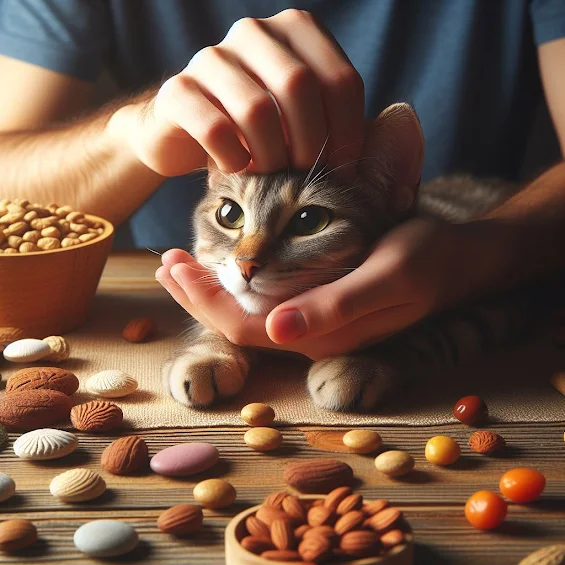
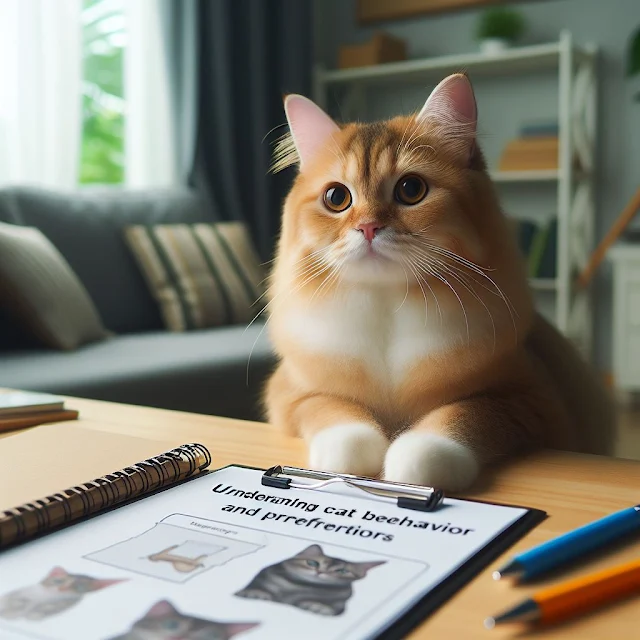

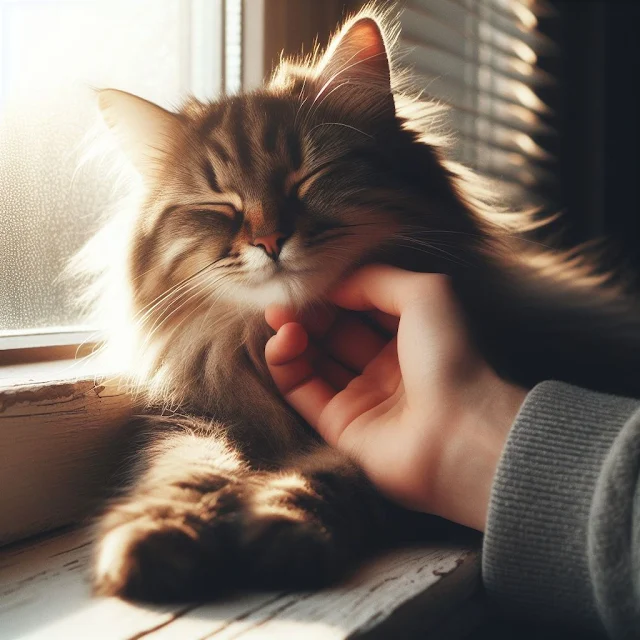
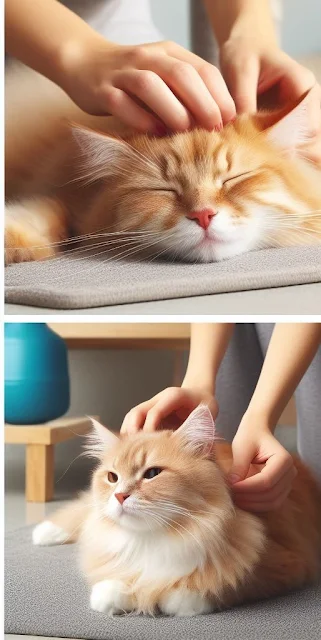



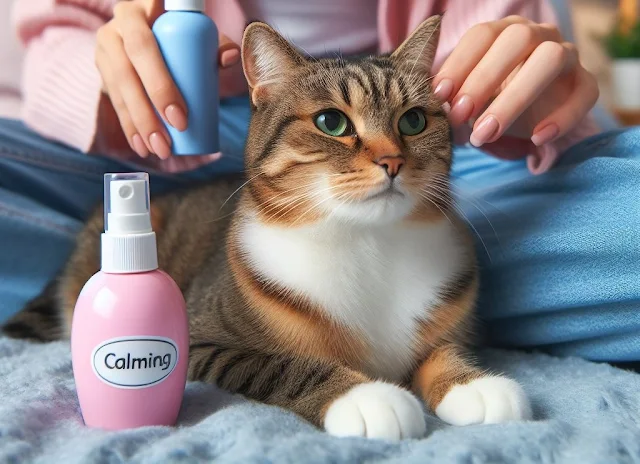
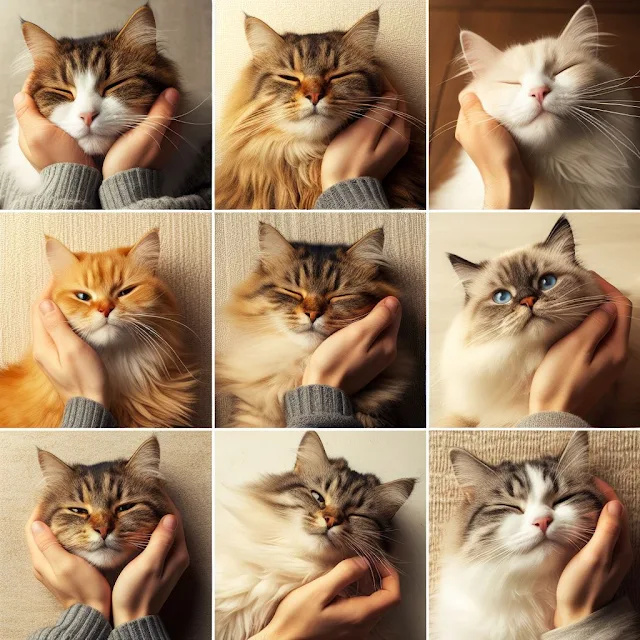
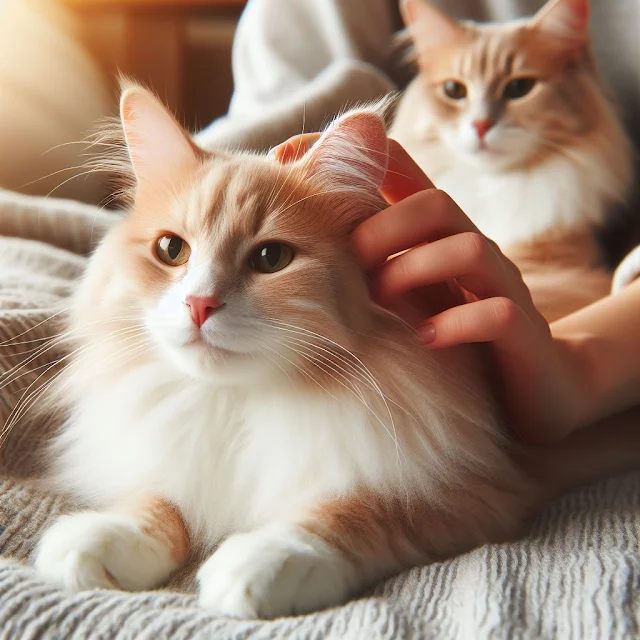
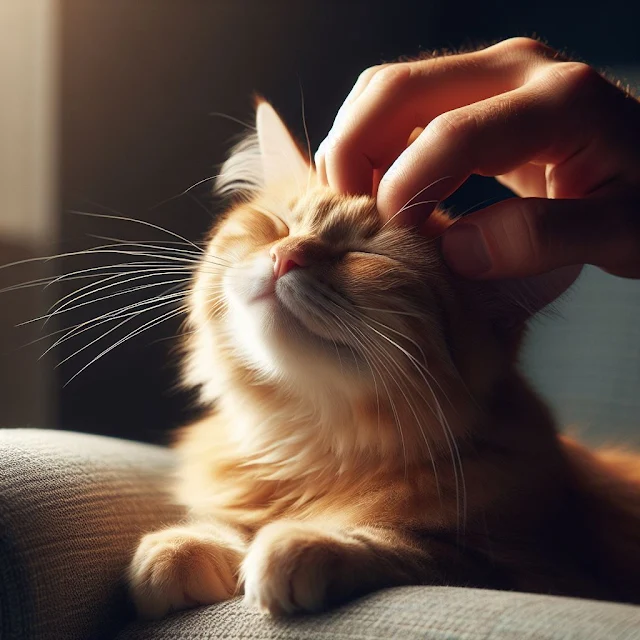


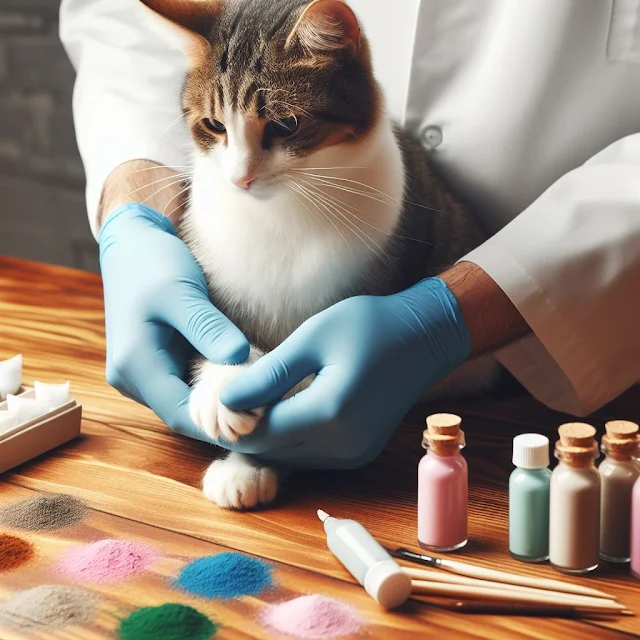
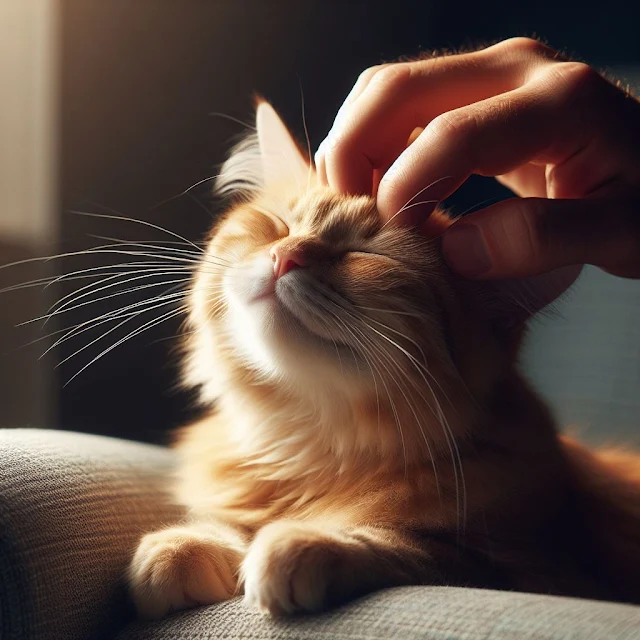

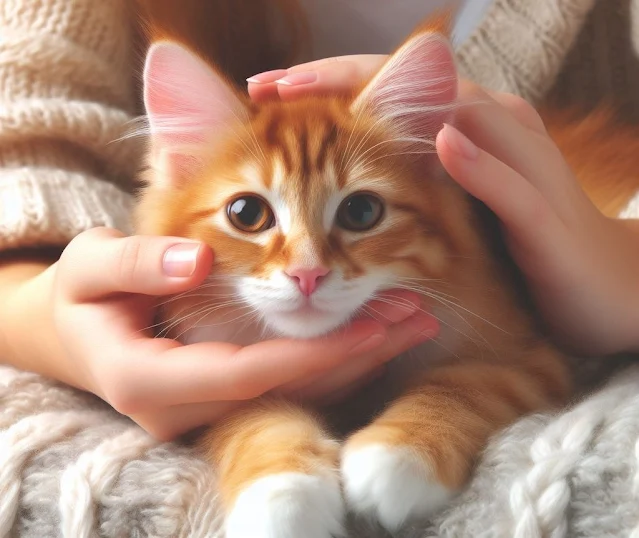

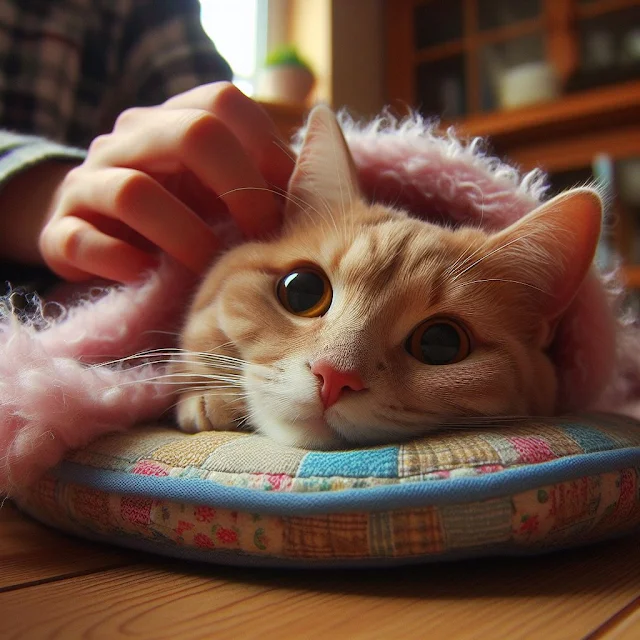
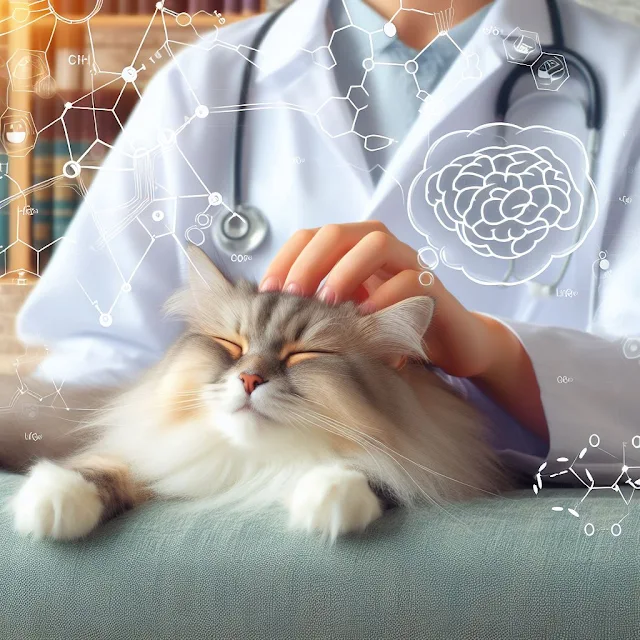
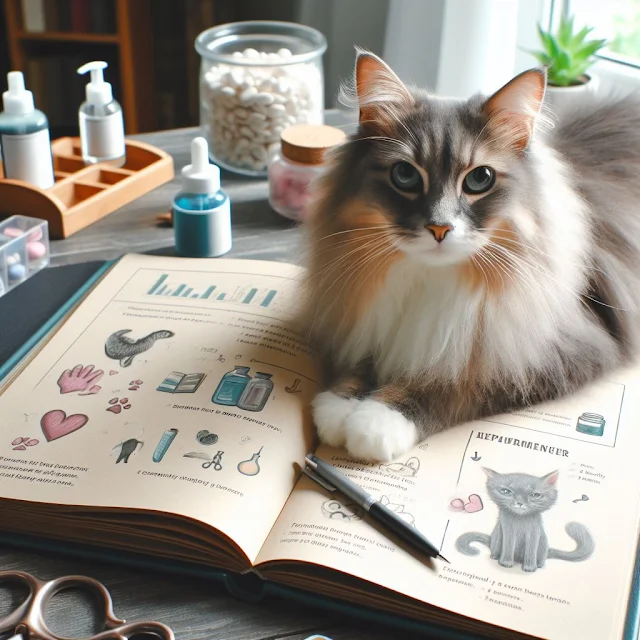
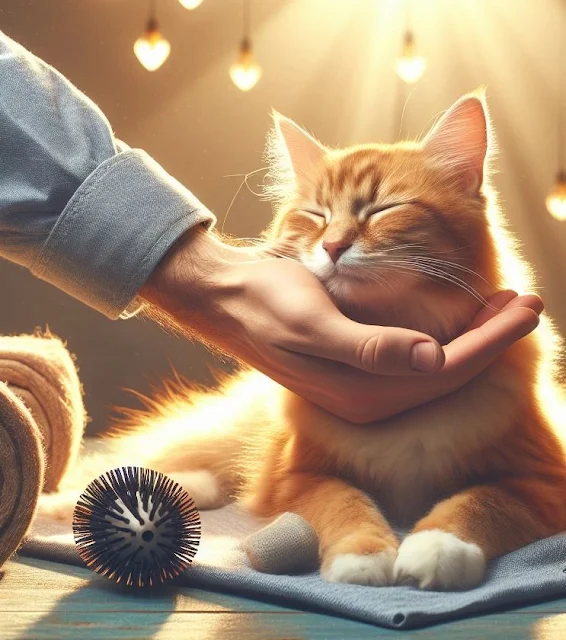


.jpeg)
0 Comments